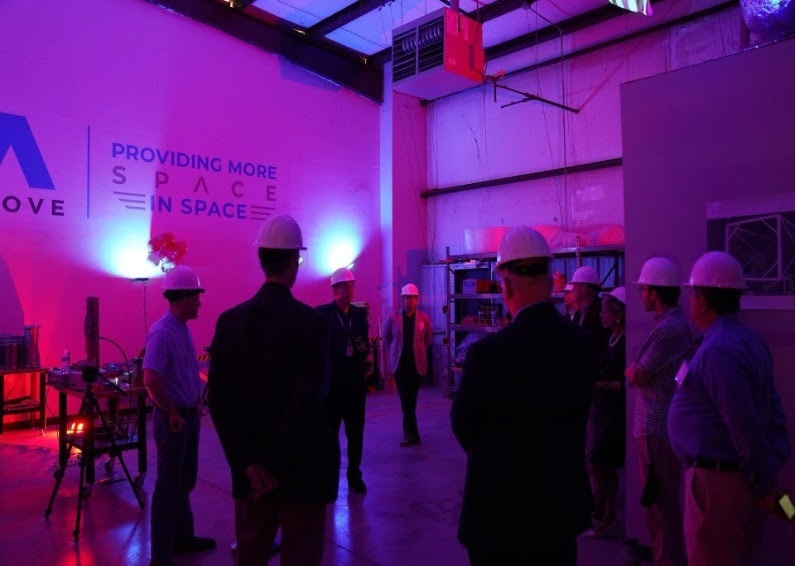Above: Space Development and Electric Sky successfully tested their first rapidly deployable, free-flying on-orbit platform, Archimedes, serving as an orbital system for solar panels, beamed power, and electronically steerable antenna arrays for communications and monitoring, as well as other space infrastructure functions.
 At a lab bench test last week, Electric Sky wirelessly powered a laser carried on the Above Archimedes which can be scaled to enable ‘electrical substations’ in space. Above: Space CTO Tom Spilker explains the test to the group at the Above: Space facility in Huntsville, Alabama. Image Credit: Above
At a lab bench test last week, Electric Sky wirelessly powered a laser carried on the Above Archimedes which can be scaled to enable ‘electrical substations’ in space. Above: Space CTO Tom Spilker explains the test to the group at the Above: Space facility in Huntsville, Alabama. Image Credit: Above
"Above: Space conducted a flawless ground-test of our efficient, rapidly deliverable Archimedes platform that will feature extremely flat surfaces for commercial and critical applications," said Above: Space chief executive officer Rhonda Stevenson. "In addition to enabling a wide variety of commercial activities, Archimedes will deliver a range of tactical missions with a large, rapidly deployable form factor to maintain readiness and strategic high ground in the cislunar domain."
The ability to beam Megawatt (MW) power levels from ground to orbit fulfills a vital need for future space industry initiatives. Archimedes is a significant new technology for energy-intensive, on-orbit manufacturing, communications, and other commercial activities, as well as organizations focused on phased domain communications, C3 capabilities, and tactical applications. These include directed energy systems for:
- Developing space-based manufacturing and processing power
- Transmitting useful amounts of power (MW) from ground level on earth, where it is less expensive to produce and store on a platform in orbit such as Archimedes
- Maintaining high-data-rate, long-range communications
- Operating continuous, high-precision space domain awareness through high-power, short-wavelength, space-based radar, or other detection techniques
- Deorbiting or disabling of on-orbit assets through transfer of mass or energy
- Disrupting adversary access with short-notice lethality and defensive asset disruption
The Electric Sky power demonstration showed that an adaption of existing radio-frequency technology can transmit electric energy from one location to another.
“Electricity is plentiful and cheap here on the ground but scarce and expensive in space; we remedy that imbalance,” says Robert Millman, CEO of Electric Sky. “In this lab-bench test, El-Sky wirelessly powered a laser carried by Archimedes, which can be scaled to enable ‘electrical substations’ in space.”
Millman explains the benefits. “Civilization is sometimes measured in kilowatts, and current spacecraft have too little power. Our ground transmitter uses radio waves to move low power through the lower atmosphere, then self-focuses those waves at high altitude to deliver higher power to a space platform. Combining this transmission technique with Archimedes’ rapid deployment and versatility makes megawatts available for high-power electric propulsion, active sensors, edge computing, directed energy, power-relay to cislunar space, in-space construction, and other uses.”
Stevenson added, "Our valued partnership with Electric Sky has profound implications for the defense of critical on-orbit assets, climate science, communications, and maintaining the strategic high ground in cislunar space. "We are already close to our next iteration of Archimedes with even more groundbreaking technology demonstrations in the near future."
Development of Archimedes is funded in part by the U. S. Space Force, a separate and distinct branch of the armed services, organized under the Department of the Air Force.